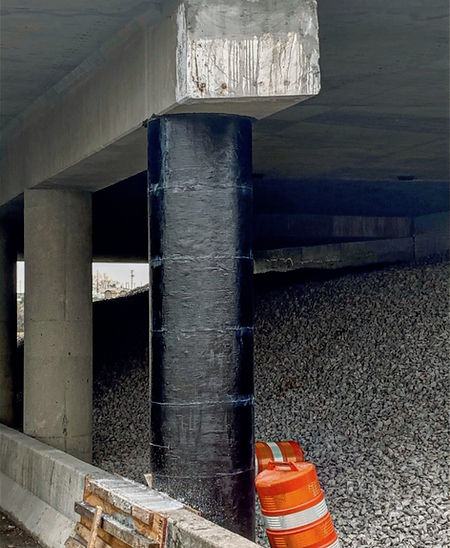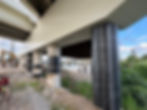Carbon Fiber is bridging the gap on America's aging infrastructure
Structural deficiencies in bridges can lead to catastrophic failures, posing severe risks to human life and economic activities. Proactive reinforcement and rehabilitation are essential to prevent accidents and ensure the safe passage of vehicles and pedestrians. Modern transportation demands have increased significantly, with higher traffic volumes and heavier loads than originally anticipated. This escalation places additional stress on bridges, necessitating reinforcement to handle current and future demands.
1 in every 13 bridges in America is in ‘poor’ condition
_edited.jpg)

85% of the total value of freight shipped across the US travel about 3 trillion miles across the 600,000 bridges across the US. According to the Federal Highway Administration, 46,000 of those bridges are structurally deficient and at least one of their key elements — deck, superstructure, substructure or culverts — are rated as poor. While structurally deficient bridges are not inherently unsafe, they require substantial investment to maintain, they are also at higher risk for closures or weight restrictions.
Ensuring safety and longevity for our infrastructure: innovative solutions for modern challenges

The repair of bridge components using SRS 600-UNI, a high-strength unidirectional carbon fiber fabric, offers a sophisticated solution for structural reinforcement. Engineered for superior performance, SRS 600-UNI is bonded to compromised bridge elements through the application of SRS-1000 saturant resin, forming a high-strength composite. The repair process begins with meticulous surface preparation to ensure the substrate is free from contaminants and irregularities, optimizing adhesion. The SRS-1000 resin is then applied to the prepared surface, followed by the precise alignment of the SRS 600-UNI carbon fiber fabric in the direction of maximum tensile stress. Upon curing, this composite system significantly enhances the flexural strength, load-bearing capacity, and durability of the bridge components. The inherent properties of SRS 600-UNI, including its lightweight nature and resistance to corrosion, make it an ideal material for reinforcing critical structural areas without compromising the overall weight or resilience of the bridge. This advanced reinforcement technique ensures long-term structural integrity and safety, meeting the rigorous demands of modern engineering standards.

A client experience you can rely on
Our expert in-house engineers and dedicated support team are committed to providing an unparalleled customer experience. With an extensive carbon fiber inventory and same day shipping, SRS has the materials and expertise you can count on.
• Engineered Carbon Fiber Designs
• Same Day Support
• Contractor Training
• Commercial Format Roll Kits




600 gsm unidirectional carbon fiber fabric designed to perform under pressure
A unidirectional, high-strength, non-corrosive carbon fiber fabric designed to be field laminated with SRS-1000 Epoxy adhesive to create a carbon fiber-reinforced polymer (CFRP) composite for structural reinforcement and strengthening of concrete and masonry structures.
Reinforcing and rehabilitating bridges is an urgent and ongoing challenge that requires the combined efforts of engineers and contractors. By utilizing advanced materials and techniques, we can enhance the structural integrity, safety, and longevity of our bridges, securing a reliable infrastructure for future generations.





